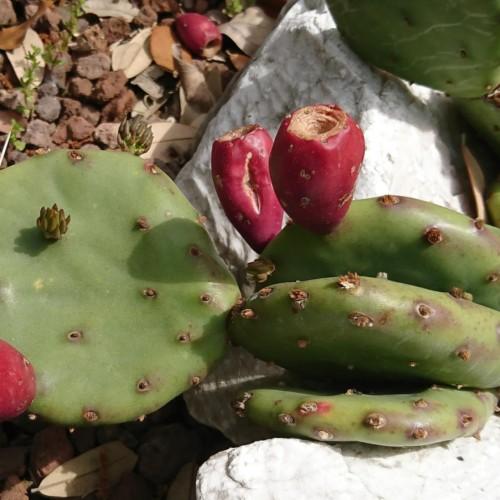
prickly-pear
Opuntia compressa
Cycle:
Herbaceous Perennial
Watering:
Minimum
Hardiness Zone:
4 - 9
Flowers:
Flowers
Sun:
Full sun
Fruits:
Fruits Ready In Summer
Edible:
Yes
Growth Rate:
Low
Maintenance:
Low
Poisonous To Pets:
Yes
Drought Tolerant:
Yes
Salt Tolerant:
Yes
Thorny:
Yes
Invasive:
Yes
Care Level:
Medium
watering
When watering prickly-pear, ensure that soil is moist but not soggy. Water every week to 10 days during the growing season, reducing the frequency as temperatures cool off in the fall. As winter approaches water only every 2-3 weeks to ensure that the soil does not become too wet. Once spring rolls around, and temperatures warm up, increase the frequency of watering back to once every week to 10 days.
sunlight
Prickly-pear (Opuntia compressa) plants need 6 to 8 hours of direct sunlight daily to flower and produce fruits; however, they will tolerate partial shade and require less sunlight in hot climates to prevent sunburn. During the hot summer months, late morning sunlight is ideal as they may get too hot otherwise. In milder climates, they can receive full sun all day. Prickly-pears do best in locations that are sunny and sheltered from wind.
pruning
Prickly-pear (Opuntia compressa) should be pruned lightly in late spring, and more severely in late summer or early fall. Light pruning should be done to remove dead or diseased branches and to maintain the desired shape of the plant. More severe pruning can include cutting back long and spreading branches to reduce size and density. Whenever possible, remove only 1 or 2 branches at a time so as not to disturb the plant's structure. Always make sure to cut just above a stem or branch joint. Pruning will promote the growth of healthy, vigorous new branches.
